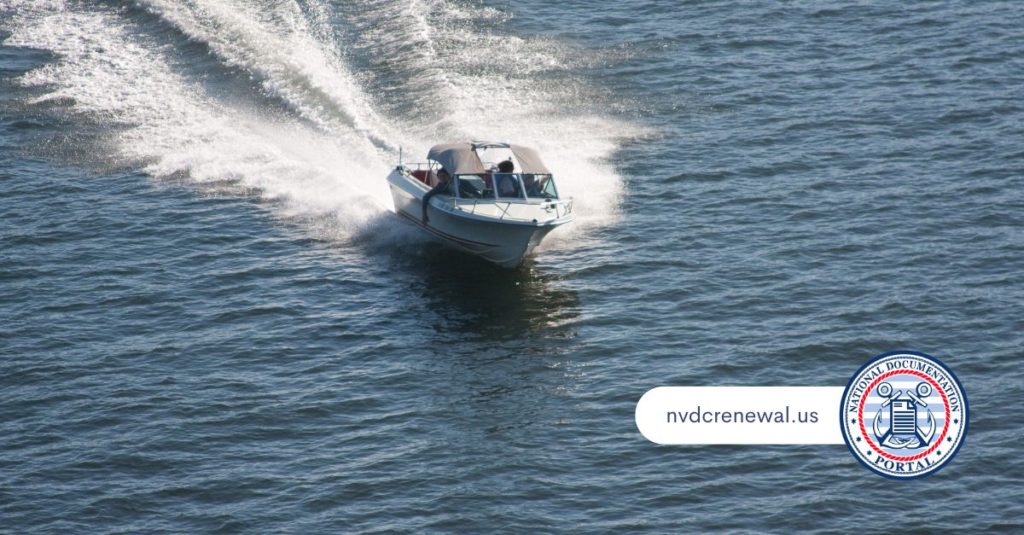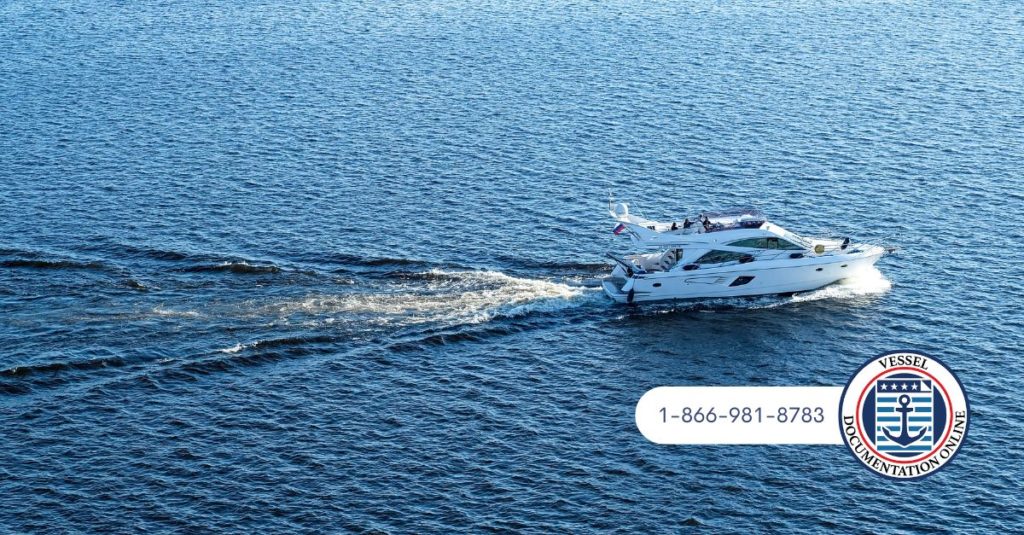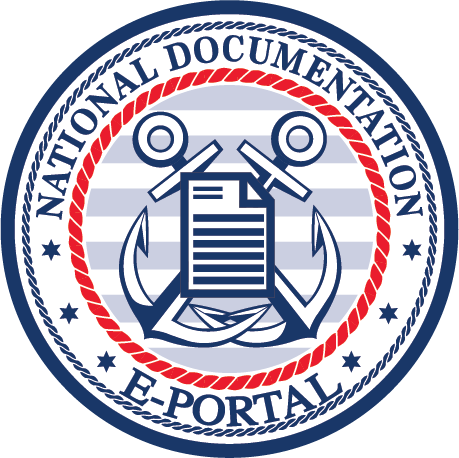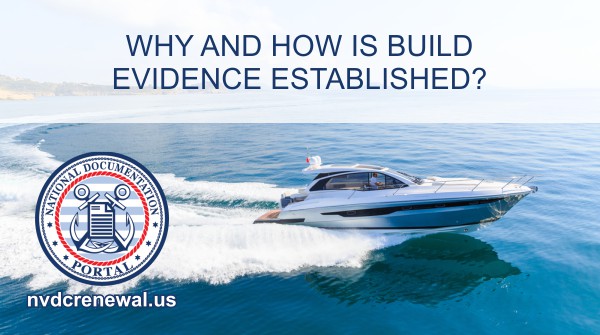Build evidence for US boat documentation is typically established by submitting a Builder’s Certification form, which must be completed by either the person who constructed the vessel, someone who oversaw its construction, or an official from the building company who has examined the company’s records to determine the construction facts.

This documentation proves your vessel was built in the United States. It is essential for obtaining certain endorsements on your Certificate of Documentation, particularly for commercial fishing or coastwise trade operations.
Build evidence serves as proof that your vessel meets the American-built requirement mandated by federal maritime law. Without proper build evidence, your vessel cannot qualify for specific endorsements that allow participation in protected maritime activities.
We help vessel owners navigate this complex requirement in many ways. Specifically, we guide them through the documentation process and ensuring all necessary forms are properly completed and submitted.
Build Evidence and US Boat Documentation
Evidence that a vessel was constructed in the United States becomes critical when you need your boat to operate in protected waters or engage in specific commercial activities. The federal government requires this proof to ensure that American-built vessels receive preference in domestic maritime commerce, supporting the domestic shipbuilding industry and maintaining maritime security.
Our documentation service recognizes that many boat owners discover this requirement only when they’re ready to expand their vessel’s operational capabilities.
For example, often, we work with clients who initially documented their vessels for recreational purposes but later decided to enter commercial fishing or passenger operations. During this transition, they learn that their current documentation lacks the necessary build evidence for commercial endorsements.
We’ve assisted countless customers who purchased older vessels without realizing the seller hadn’t preserved the original build documentation. One common scenario involves buyers who acquire a fishing vessel at auction, only to discover that the previous owner lost the builder’s certification during bankruptcy proceedings.
In these situations, we help clients explore alternative methods to establish build evidence, including locating the original builder or finding company records that can substitute for missing documentation.
The regulatory framework governing build evidence requirements can be found in 46 CFR Part 67, which outlines the specific criteria and procedures for establishing American construction. Our team stays current with these regulations to ensure our clients receive accurate guidance throughout the documentation process.
What Constitutes Valid Build Evidence
The gold standard for establishing build evidence is the original Builder’s Certification. This document must contain detailed information about the vessel’s construction, including where all major hull and superstructure components were fabricated and where final assembly took place. The certification requires an original signature from someone with direct knowledge of the construction process.
Our service emphasizes the importance of obtaining original documentation rather than copies. Many clients contact us after their initial applications were rejected because they submitted photocopies of builder certifications.
We can guide vessel owners through the process of requesting original documents from builders or help them understand when alternative documentation might be acceptable.
When the original builder is no longer in business, you can use our portal to update company records that may have been transferred to successor companies or archived with state business registries. We recently helped a client whose vessel was built by a company that ceased operations fifteen years ago.
Through our portal, you can upload the necessary certification.
Alternative forms of build evidence include detailed invoices showing materials purchased and construction phases, photographs documenting the building process, or sworn affidavits from individuals who witnessed the construction.
However, these alternatives require more extensive review and may not guarantee approval, which is why we always recommend pursuing original builder certifications when possible.

When Build Evidence Becomes Mandatory
Build evidence requirements become mandatory when applying for coastwise or fishery endorsements on your Certificate of Documentation. These endorsements allow vessels to engage in domestic cargo transportation. Additionally, the vessels can engage in passenger services between U.S. ports, or commercial fishing in U.S. waters. Without proper build evidence, your vessel cannot participate in these protected maritime activities.
We frequently work with vessel owners who initially obtained endorsements without needing build evidence, only to discover this requirement later. Our service helps these clients understand the distinction between different endorsement types and what documentation each requires.
Often, we help charter boat operators who start with recreational documentation but later want to offer passenger services. When they apply for the necessary endorsements, they discover their vessel needs build evidence to qualify for coastwise privileges.
For vessels engaged in fishing operations, build evidence becomes even more critical because fishery endorsements have strict American-built requirements. We work with fishing vessel owners. That way, they can have comprehensive documentation that meets these heightened standards, including detailed ownership histories and construction evidence.
If you believe that your vessel meets fishery or coastwise endorsement requirements, you can change your endorsement at that link.
Alternative Options for Non-U.S. Built Vessels
Vessel owners with foreign-built boats aren’t automatically excluded from commercial operations. For qualifying vessels at least three years old intended for limited commercial passenger use, we help clients apply for a MARAD waiver. With this, the client can exempt them from American-build requirements under specific circumstances.
Our service assists clients in preparing waiver applications, which require detailed justifications and comprehensive vessel information. These applications must demonstrate that granting the waiver serves the public interest. Also, they must show that the boat won’t adversely affect American shipbuilding or maritime employment. We help clients develop compelling cases for their waiver requests by documenting their vessel’s unique characteristics and intended use.
We recently assisted a client who owned a specialized research vessel built in Norway. The vessel’s unique capabilities made it suitable for educational programs that couldn’t be conducted with available American-built alternatives.
The waiver process requires patience and thorough preparation, as MARAD carefully reviews each application. We prepare clients for potential requests for additional information. Success often depends on demonstrating that the vessel fills a unique role that available American-built vessels cannot fulfill.
A Better US Boat Documentation Process
Our documentation service simplifies just about every step of the US boat documentation process.
Our comprehensive approach to build evidence ensures that your vessel documentation meets all federal requirements while positioning you for successful commercial operations in protected U.S. waters. To see all of the forms that we offer, check out our portal.

